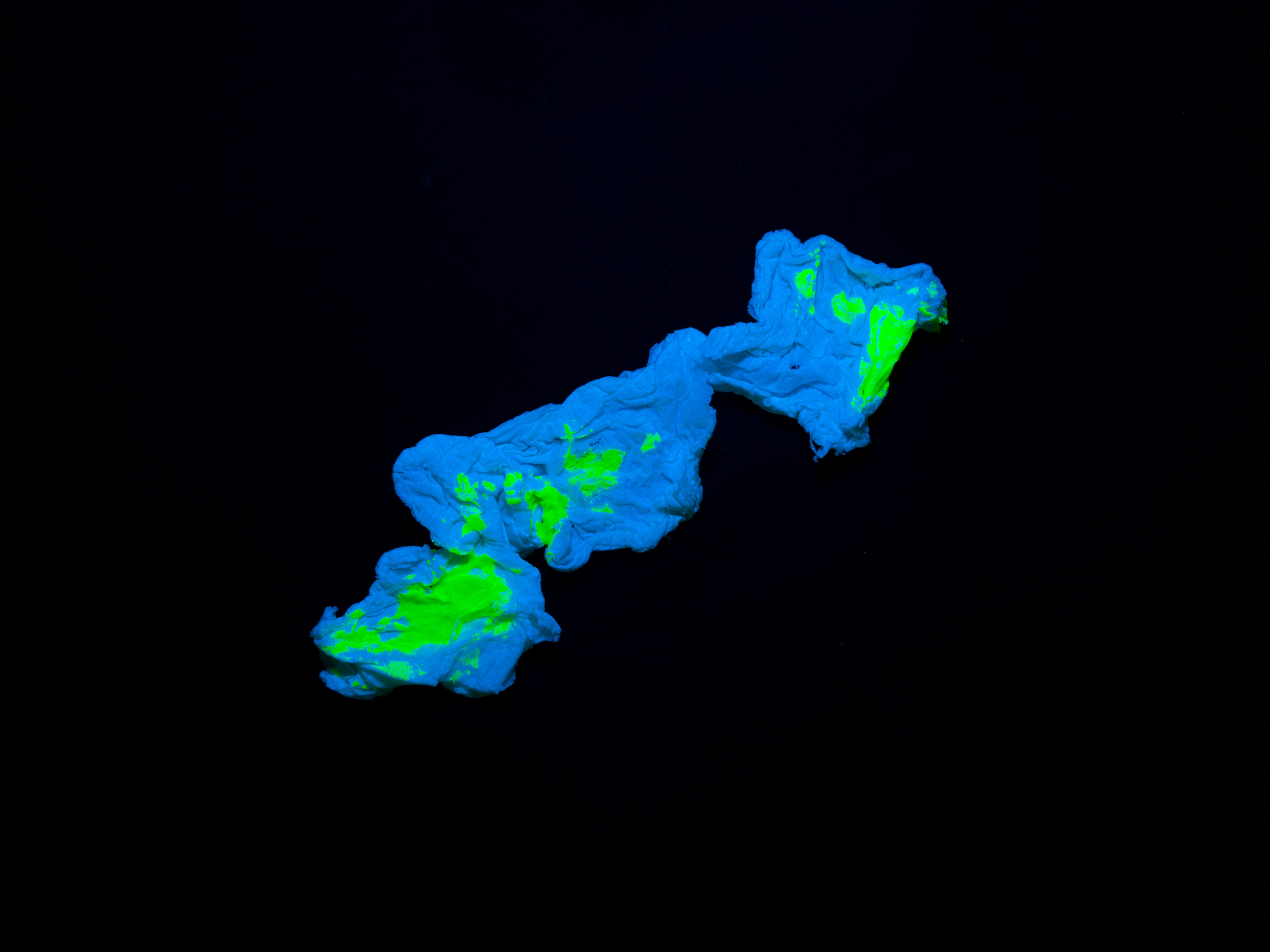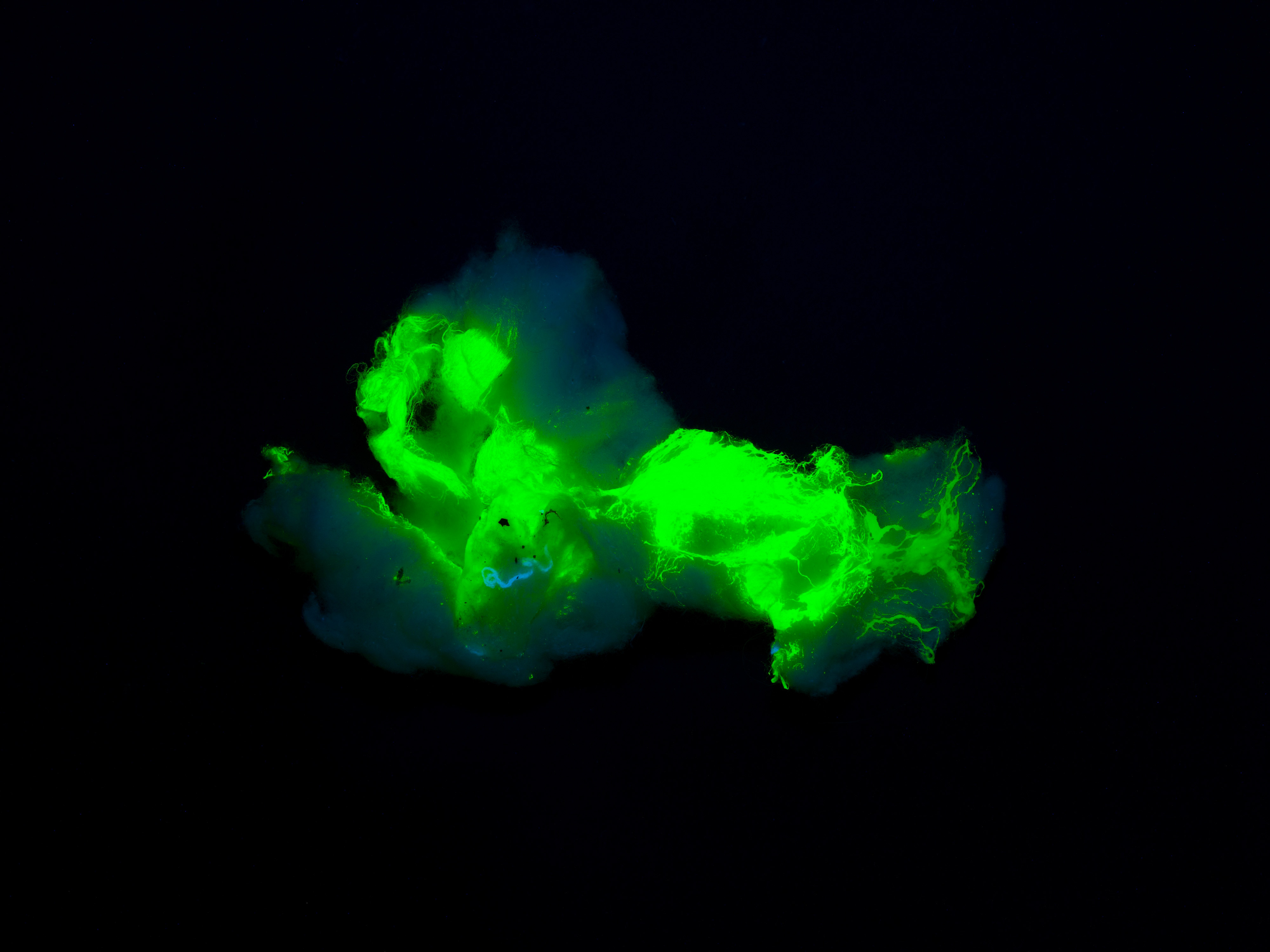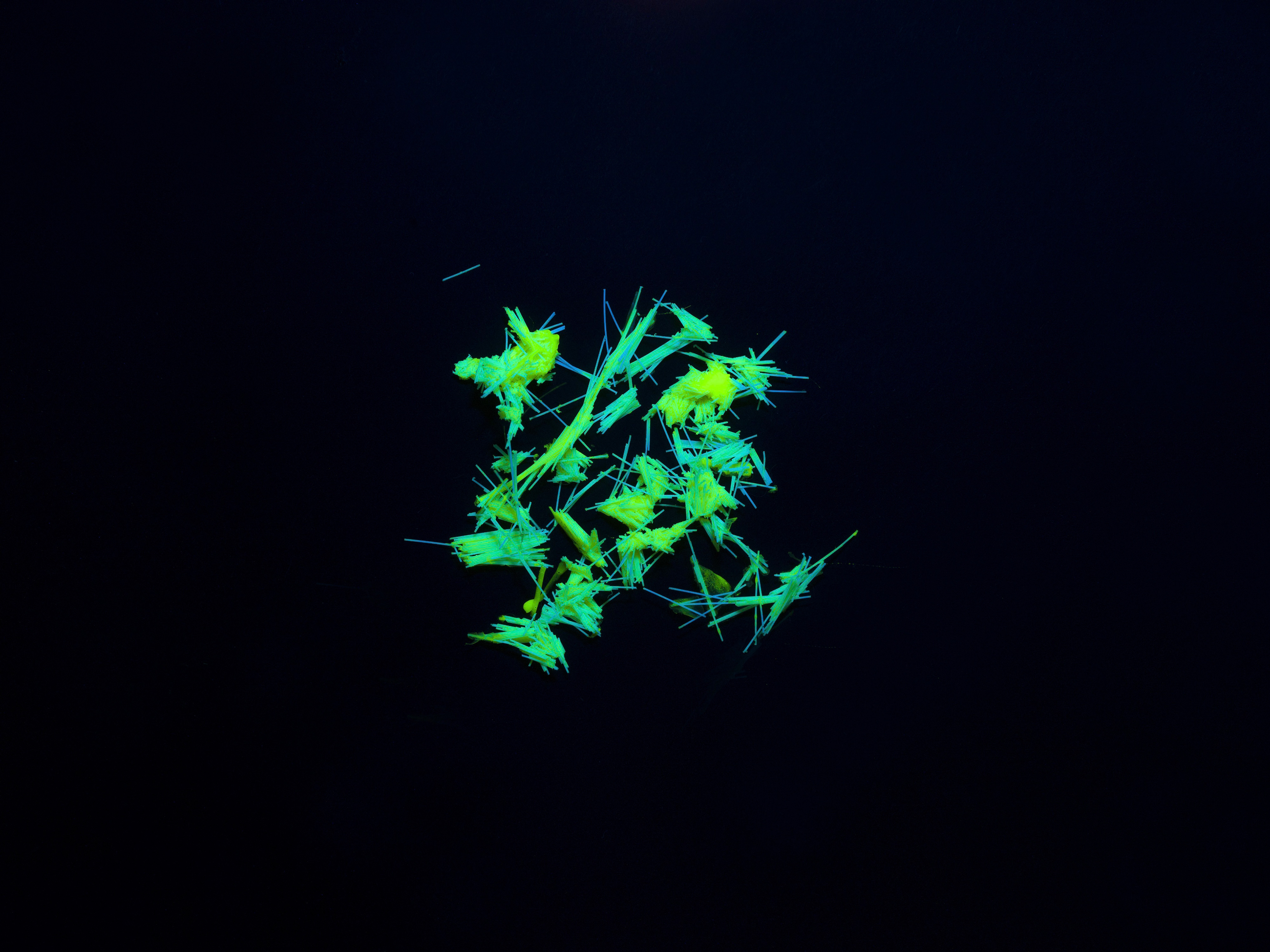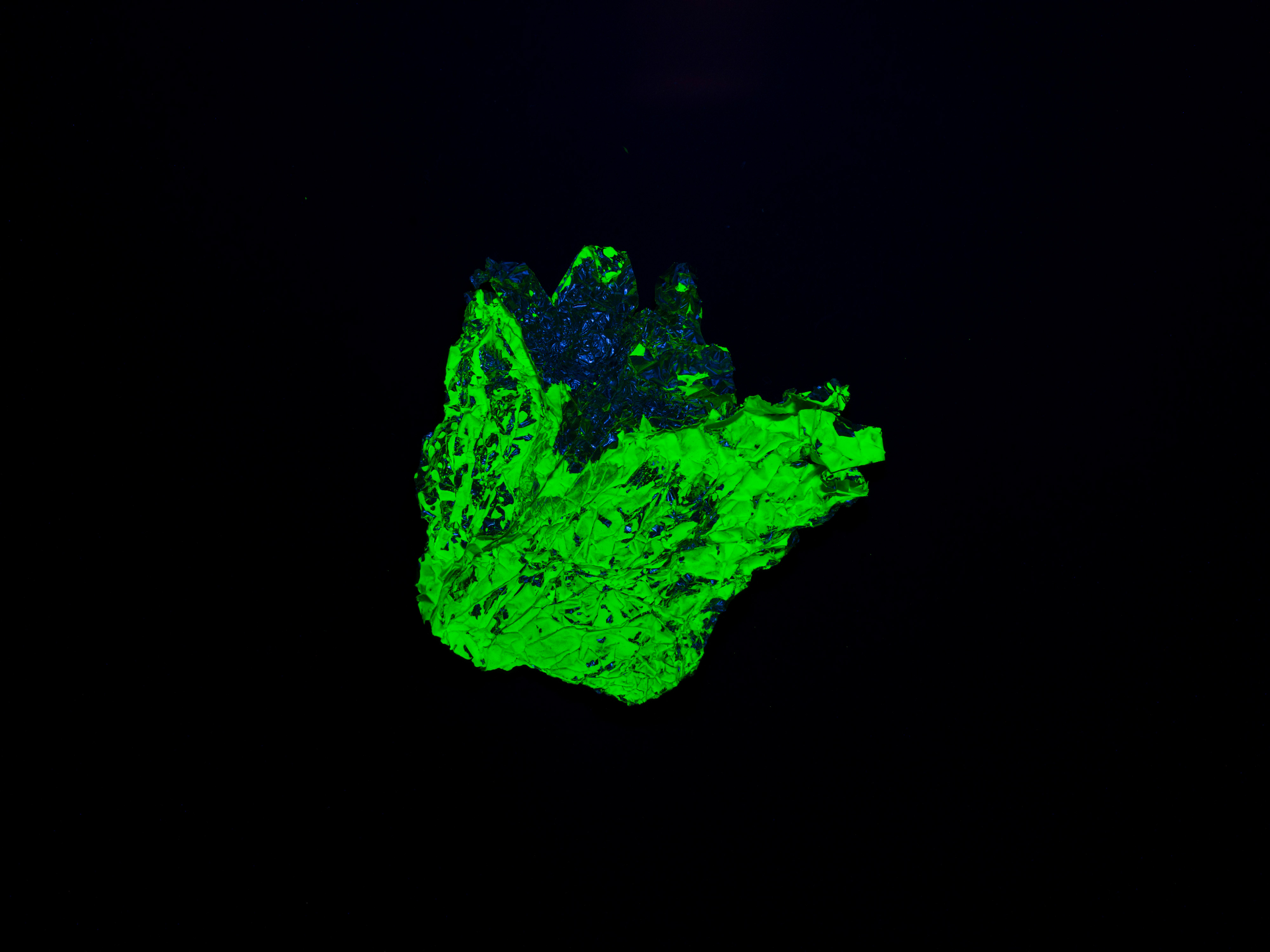Luminous Traces









Luminous Traces explores hows objects that appear unfamiliar without any explanation can be easily perceived as evidence. Essentially, when tied to the context of a crime or presented in the atypical way of police evidence, an object can be easily read as something that holds some explanation for a series of events.
The work presents ‘evidence’ that has no explanation and is not representative of the usual kind one would expect; left traces that are beyond what the eye can see, traces that lurk around us but are never revealed. The way the audience interprets this work is left completely open, with no ‘correct’ explanation provided, this forms an integral part of how evidence can generate a whole multitude of opinions.
The nine photographs, laid out in a rigid grid format, depict various mundane household objects covered in a strange mantis glowing substance. The substance completely transforms the object, highlighting strange shapes that make the specimens difficult to decipher. Without any indication of what the substance is, the audience are left confused as to what exactly they are looking at. This is the only mystery that has no supporting information about what exactly it is.
Because the objects were ripped into smaller, more abstract specimens, it is difficult for the audience to recognise what they are. To assist in this problem, a supporting caption is provided, detailing the various materials from which each object is made. This supporting caption resembles one found in a scientific book, making it easier for the audience to perceive the work as being credible ‘evidence’. It also gives the audience clues from which they can investigate further in order to find out what exactly each object is.